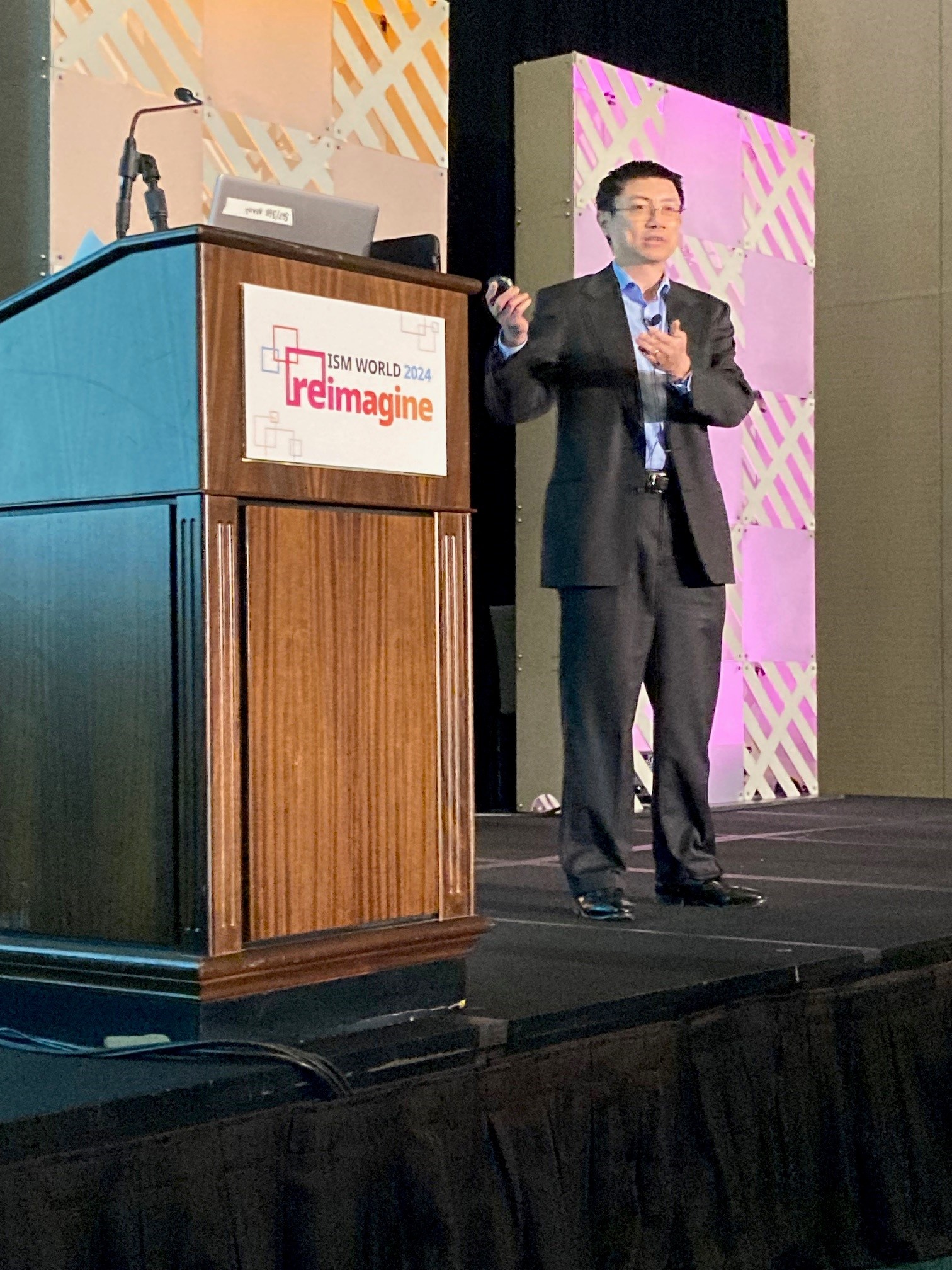ISM World 2024: Shifting China Sourcing Strategies Into Reverse

The irony of the current business zeitgeist of moving manufacturing and sourcing operations from China was not lost on Lihong Wu, MBA, CPIM, as he commenced his session at ISM World 2024 on Wednesday at the MGM Grand in Las Vegas.
“It was only 20 years ago,” the veteran strategic sourcing executive told attendees, “that companies would hire you to help them move their operations to China.”
That was more than an observation; it was the basis of “Cross Continent Supply Base Transfer: A Case Study for Reflection and Future Success.” In the session, Wu drew from his experience helping companies establish factories and supply sources in China to advise on doing the opposite.
“Companies got very good at setting up processes, training workers (in China),” he said. “It shouldn’t be that much different; you’re just going in the other direction.”
Wu’s case study was a manufacturer of door locks and handles — ironically, he said, the same product on the doors of the conference center meeting rooms at the MGM Grand — that moved to China decades ago. The process of transferring the factory and supply base from Europe took seven years.
There are four pillars to such a transition:
- Organizational alignment, a company-wide initiative with measurable goals
- Project resources, guided and deployed by a strong leader
- Quality control process maturity, including supplier qualification standards
- Sourcing strategy, including supply base mapping and vetting.
Wu established an assessment tool to track the company’s success in each pillar, graded on a score of 1 to 5. Anything below 3 is an alarm bell, he said: “The process is a fitness test. You don’t have to be an all-star, but you can’t have major deficiencies … because somehow and someway, you are going to pay a price for that.”
A feasibility analysis should determine if products a company purchases from China are a good fit for nearshoring, and if the best fit is a complete exit from the country, or a China-plus-one strategy. Perform due diligence to understand the changing cost profile and map the new supply chain to find the impact on planning and lead time.
Also, understand that the transfer will create anxiety for the company. Wu cited a sign on the wall in a European sales office of the door lock and handle company, a year into the move: “Calm down! Our products are from China now!”
If that is the sentiment among company staff, Wu said, “think of what your customers might be experiencing.”
Key Takeaways
- Develop a detailed implementation plan, with resources and milestones.
- Carefully manage customer expectations.
- Be aware of potential intellectual-property issues.
Quote
“There will probably be a lot of debate as the company is developing a transition plan. But let people disagree, argue and fight, because this is the best time to do it, rather than being halfway into the project. And if you (planned well), your organization should be aligned, which is very important.” — Wu


